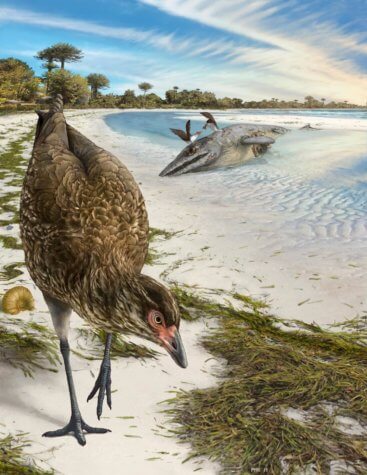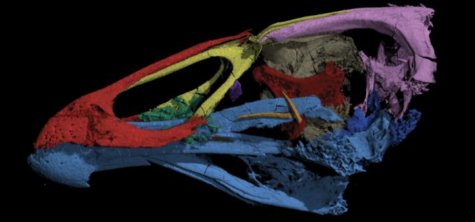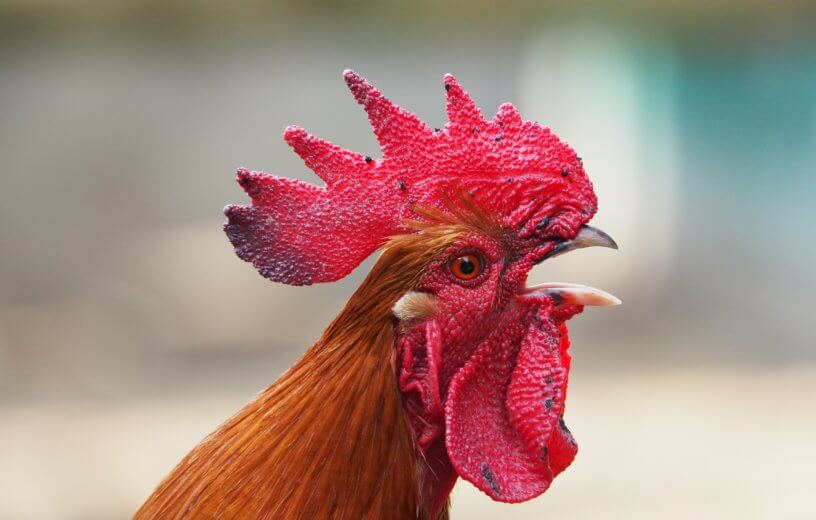CAMBRIDGE, England — The oldest known fossil of a modern bird has been discovered by a team of paleontologists, and it is believed to date all the way back to the time of dinosaurs. The fossil, nicknamed the “wonderchicken,” is in quite good shape considering its age and features a nearly complete skull. It was found lodged inside pieces of rock, and is estimated to date back to roughly less than one million years before an asteroid wiped out all large dinosaurs.
Researchers from the University of Cambridge say this new fossil helps clear up why birds were able to survive the mass extinction event that wiped out giant dinosaurs.

After analyzing the skull extensively, the study’s authors say it is very similar to the skulls of modern chickens and ducks. This indicates that present day birds are probably direct descendants of the wonderchicken.
As if all that wasn’t historic enough, the fossil was discovered in a limestone quarry near the Belgium-Netherlands border. That means it is the first bird fossil from the age of dinosaurs to be discovered in the northern hemisphere.
All in all, the fossil is somewhere around 66.7 million years old.
If it weren’t for modern high-resolution x-ray CT scans, this groundbreaking discovery never would have happened. It was these scans that revealed the skull buried under one millimetre of rock. To the naked eye, the only indicator that something was underneath was a few tiny leg bone fragments sticking out from under the rock.
“The moment I first saw what was beneath the rock was the most exciting moment of my scientific career,” says Dr. Daniel Field from Cambridge’s Department of Earth Sciences, who led the research, in a release. “This is one of the best-preserved fossil bird skulls of any age, from anywhere in the world. We almost had to pinch ourselves when we saw it, knowing that it was from such an important time in Earth’s history.”
“The ability to CT scan fossils, like we can at the Cambridge Biotomography Centre, has completely transformed how we study palaeontology in the 21st century,” he adds.
“Finding the skull blew my mind,” says co-author Juan Benito, also from Cambridge. “Without these cutting-edge scans, we never would have known that we were holding the oldest modern bird skull in the world.”
The research team describe the skull as a type of chicken-duck fusion.
“The origins of living bird diversity are shrouded in mystery — other than knowing that modern birds arose at some point towards the end of the age of dinosaurs, we have very little fossil evidence of them until after the asteroid hit,” explains co-author Albert Chen, a PhD student at Cambridge. “This fossil provides our earliest direct glimpse of what modern birds were like during the initial stages of their evolutionary history.”

While wonderchicken has a certain comic-book charm to it, researchers have also named the fossil Asteriornis. That name is a reference to Asteria, the Greek goddess of falling stars.
“We thought it was an appropriate name for a creature that lived just before the end-Cretaceous asteroid impact,” comments co-author Dr Daniel Ksepka from the Bruce Museum in Greenwich, Connecticut. “In Greek mythology, Asteria transforms herself into a quail, and we believe Asteriornis was close to the common ancestor that today includes quails, as well as chickens and ducks.”
The fact that the wonderchicken fossil was discovered in Europe makes it particularly special; there are hardly any fossil records of birds from Europe for this time period. So, this development is some of the first concrete evidence that the European area was significant for the evolutionary development of modern birds.
“This fossil tells us that early on, at least some modern birds were fairly small-bodied, ground-dwelling birds that lived near the seashore,” Dr. Field concludes. “Asteriornis now gives us a search image for future fossil discoveries — hopefully it ushers in a new era of fossil finds that help clarify how, when and where modern birds first evolved.”
The study is published in Nature.
